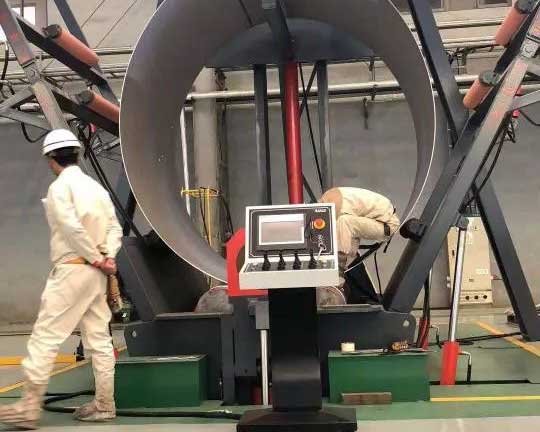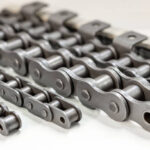In the realm of industrial safety and machinery protection, the role of protective barriers cannot be overstated. These barriers play a pivotal role in safeguarding both workers and equipment, ensuring that industrial processes run smoothly and securely.
Cover plates, often called trims in industrial settings, are versatile components that find their place in various applications. These unassuming elements serve as critical protective shields, safeguarding machinery from damage, preventing accidents, and ensuring worker safety.
Enhancing Industrial Safety and Machinery Protection with Cover Plates
Trims, specifically cover plates, have various industrial applications for protecting machines and workers in multiple settings. These cover plates serve as protective barriers or shields, offering safety and functional benefits in several ways:
Machine Protection
Cover plates are crucial in safeguarding machinery and equipment in industrial environments. They often protect sensitive components, including gears, belts, sensors, and electrical panels. Installing cover plates over these components significantly reduces the risk of accidental contact or damage. This not only ensures the safety of workers but also extends the lifespan of machines. Reduced downtime due to maintenance or repairs translates to increased productivity and business cost savings.
Safety Barriers
In manufacturing and processing plants, safety is a top priority. Trims are employed as safety barriers to restrict access to hazardous areas. These areas may contain moving parts, heavy machinery, or other dangers that could threaten workers. Using cover plates as physical barriers minimizes the likelihood of accidents such as entanglement or impact injuries. This proactive approach to safety helps protect workers and prevents potentially life-threatening incidents.
Dust and Debris Protection
Many industrial processes are susceptible to contamination from dust, debris, and airborne particles. Cover plates are:
- Practical barriers against such contaminants.
- Making them essential in cleanrooms.
- Food processing facilities.
- Pharmaceutical manufacturing.
- Maintaining a sterile and contamination-free workspace is critical for ensuring product quality and compliance with industry regulations.
Electrical Safety
Electrical safety is a paramount concern in industrial settings. Cover plates are utilized to enclose electrical components like circuit breakers, switches, control panels, and electrical switchboards. These plates prevent accidental contact, electrical shocks, or short circuits, reducing the risk of electrical accidents. Ensuring the safety of workers around electricity is a fundamental aspect of workplace safety and regulatory compliance
Heat and Fire Protection
Cover plates made from heat-resistant materials are indispensable in industries with high temperatures. They act as protective barriers that help contain heat and prevent fires or heat-related damage to surrounding equipment and structures. This is particularly important in industries such as metallurgy, glass manufacturing, and foundries where extreme heat is generated.
Noise Reduction
Noise pollution in industrial environments can be a significant concern for worker comfort and safety. Acoustic cover plates are specifically designed to dampen the noise generated by machinery, making the workplace quieter and more conducive to concentration and communication. Reduced noise levels contribute to a safer and more comfortable working environment, potentially mitigating long-term health risks associated with excessive noise exposure.
Corrosion Resistance
Corrosive environments, often found in chemical processing plants or coastal areas, require cover plates from corrosion-resistant materials like stainless steel or plastic. These plates protect machinery and equipment from degradation caused by chemical exposure, ensuring the longevity of assets and reducing maintenance costs.
Hygiene and Sanitation
Maintaining high levels of hygiene and sanitation is critical in the food and beverage industry. Cover plates in this sector are designed to be easy to clean and sanitize, preventing the accumulation of contaminants that can compromise product quality and safety. These cover plates help meet strict hygiene standards and regulatory requirements.
Aesthetic Enhancements
Beyond their functional roles, trims can contribute to a visually pleasing work environment. They create a more organized and aesthetically pleasing workspace by concealing unsightly or cluttered machinery. This can boost employee morale and contribute to a positive work environment.
Customization
Cover plates can be customized to fit the specific machinery and equipment requirements. This tailored approach ensures a precise fit, maximum protection, and adherence to industry standards and safety regulations.
Types of Trims
Each type of trims or cover plate serves a specific purpose in industrial applications, addressing unique challenges and contributing to machinery and workspaces’ overall safety, efficiency, and functionality. The selection of the appropriate type of cover plate depends on the specific requirements of the industrial setting and the desired outcomes.
- Safety Covers
These protect workers from contact with potentially hazardous machine parts or equipment. They often have interlocking mechanisms or lockout/tagout features to ensure that machinery cannot be operated while the cover is in place.
- Dust Shields
Also known as dust covers or dust caps, are used to prevent the infiltration of dust, dirt, and particulate matter into sensitive machinery and equipment. They help maintain the cleanliness and efficiency of industrial processes.
- Noise Dampeners
Also known as acoustic cover plates, are specifically designed to reduce machinery-generated noise levels. They feature sound-absorbing materials or designs that mitigate noise pollution, creating a quieter and more comfortable work environment.
- Heat-Resistant Covers
These are employed in environments with high temperatures or thermal hazards. These covers are made from heat-resistant plastics or ceramics and help contain heat to prevent equipment damage or fires.
- Corrosion-Resistant Covers
These are crucial in settings where machinery is exposed to corrosive substances, such as chemicals or saltwater. Stainless steel or specialized plastics are commonly used materials to protect against corrosion.
- Electrical Enclosures
These are cover plates that encase electrical components like circuit breakers, switches, and control panels. They protect against electrical hazards and ensure compliance with safety standards.
- Hygienic Covers
These are designed for industries with strict cleanliness requirements, such as food processing and pharmaceuticals. They are easy to clean and sanitize, preventing contamination and ensuring product quality.
- Aesthetic Covers
These serve both functional and visual purposes. They are used to conceal machinery or equipment, creating a cleaner and more organized workspace while enhancing the overall aesthetics of the environment.
- Fire-Resistant Covers
These are crucial in industries where fire hazards are a concern. These covers are designed to withstand high temperatures and prevent the spread of fires or heat-related damage.
- Customized Covers
These are tailored to fit specific machinery or equipment requirements precisely. They are often used when standard cover plate sizes do not provide the necessary protection or fit.
- Access Panels
These are cover plates that provide easy and controlled access to machinery or equipment for maintenance, inspections, or repairs. They are designed to be removable or hinged for convenience.
- Insulating Covers
These provide thermal insulation, especially when temperature control is critical, such as in industrial ovens or furnaces.
- Chemical-Resistant Covers
These are employed in environments where exposure to aggressive chemicals is a concern. These covers protect against chemical corrosion and damage.
- Impact-Resistant Covers
These are designed to withstand physical impacts, making them suitable for applications where machinery is at risk of being struck or bumped.
- EMI/RFI Shielding Covers
These shield electronic equipment from electromagnetic interference (EMI) or radio-frequency interference (RFI), ensuring the proper functioning of sensitive electronic components.
Factors To Consider To Ensure You Select The Right Trims
When choosing and buying trims, particularly for industrial applications aimed at protecting machines and workers with cover plates, several crucial factors should be considered to ensure that you select the right solution for your specific needs. Here are key considerations:
1. Material Selection
Identify the environmental conditions in which the trims will be used. Different materials, such as stainless steel, aluminum, plastic, or rubber, offer varying levels of corrosion resistance, heat resistance, and durability. Choose a material that can withstand the environmental challenges of your industrial setting.
2. Purpose and Application
Determine its primary purpose. Are they intended for safety, protection, noise reduction, or aesthetics? Understanding the specific application will help you choose the right design and material for the cover plates.
3. Regulatory Compliance
Ensure that what you chose meet industry-specific safety standards and regulations. Compliance with these standards is crucial, especially in industries with strict safety and hygiene requirements.
4. Size and Customization
Measure the dimensions of the machinery or equipment that requires protection. Trims should be customized or selected in sizes that precisely fit the components they cover. This ensures adequate protection and a professional appearance.
5. Durability and Longevity
Consider the its expected lifespan and their wear and tear resistance. Durable materials can extend the life of the cover plates and reduce the need for frequent replacements.
6. Ease of Installation
Evaluate the installation process and assess whether your maintenance team can carry it out or if specialized labor is required. Simple and efficient installation can save time and reduce labor costs.
7. Maintenance Requirements
Determine the maintenance needs of your choice. Some materials and designs are easier to clean and maintain than others, which is particularly important in industries with strict hygiene standards.
8. Cost Analysis
Compare its initial cost with their long-term benefits. When evaluating cost-effectiveness, consider factors such as reduced downtime, maintenance savings, and increased equipment lifespan.
9. Environmental Impact
Assess the environmental impact of the chosen materials. Opt for eco-friendly options to align with sustainability goals and reduce your carbon footprint.
10. Compatibility with Equipment
Ensure that the these are compatible with the machinery or equipment they will use. Verify that they do not obstruct access to critical components or interfere with equipment functionality.
11. Supplier Reputation
Research and select reputable suppliers with a history of providing high-quality trims. Check for reviews, certifications, and references to ensure reliability and product quality.
12. Warranty and Support:
Inquire about warranties and after-sales support from the supplier. A good warranty can provide peace of mind in case of manufacturing defects or premature wear.
Guardians of Industrial with Cover Plates of MISUMI
In the dynamic landscape of industrial safety and machinery protection, the role of cover plates, often referred to as trims, is nothing short of indispensable. These unassuming components serve as stalwart guardians, shielding workers and machinery from many potential risks and challenges. This stands as silent sentinels, fortifying the industrial landscape with a steadfast commitment to safety, efficiency, and longevity.
If you’re looking to enhance safety, protect machinery, and optimize industrial processes with high-quality trims, explore the offerings of MISUMI, a trusted leader in industrial components. Visit MISUMI’s website at https://th.misumi-ec.com to discover a world of possibilities for your industrial needs. You can also avail temperature sensor, a device used to measure the temperature level in the area of use. With their dedication to quality, reliability, and customer satisfaction, MISUMI ensures you receive the best solutions to keep your operations running smoothly. Upgrade your industrial processes today with MISUMI!





